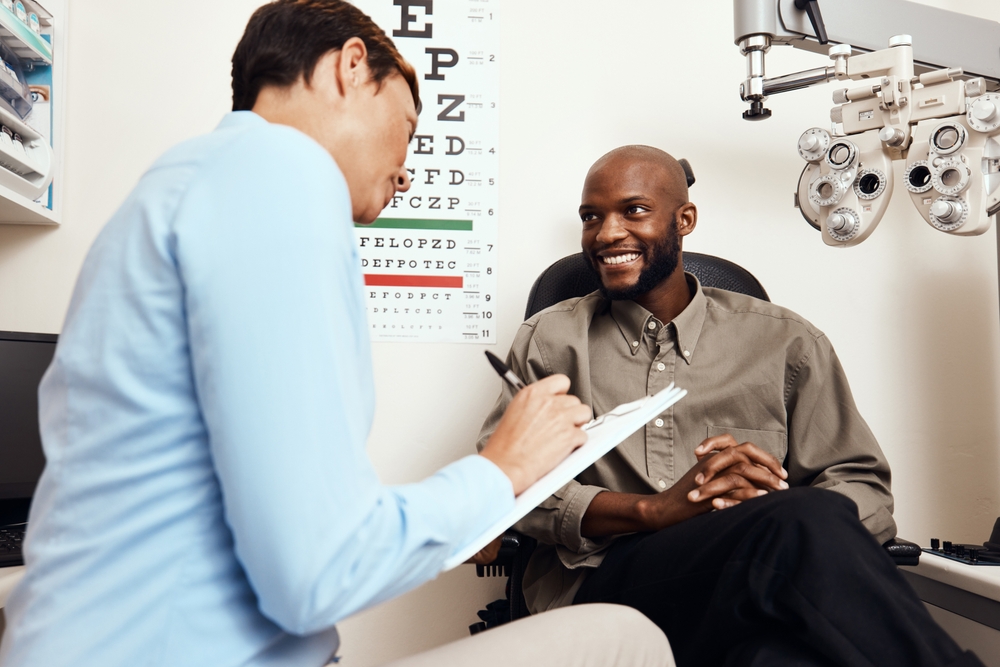
Deciding to undergo any surgical vision correction is a major decision. While you may be ready to enjoy clear vision without relying on corrective lenses, you may also be anxious about whether you’ve chosen a safe and effective option.
One of the best laser vision correction procedures available today is LASIK. Since its approval by the FDA in 1999, it has corrected the vision of millions of people.
If you are considering LASIK, but are still on the fence about making a final decision, keep reading to learn more about the safety, risks, cost, and results of LASIK.
What’s Actually Happening During LASIK?
When considering corrective vision surgery with LASIK, it is helpful to understand what happens during the LASIK procedure and how it actually corrects vision.
The LASIK procedure begins with numbing eye drops to ensure your comfort throughout the process. Your surgeon will then create a thin, hinged flap in the cornea’s outer layer. This flap is very thin, typically thinner than a human hair.
Once the flap is created and carefully lifted, an excimer laser is used to reshape the underlying corneal tissue. This laser removes microscopic amounts of tissue with incredible precision, following a pre-programmed pattern based on your specific vision correction needs.
For nearsightedness, the laser flattens the center of the cornea.
For farsightedness, it steepens the cornea’s curvature.
If you have astigmatism, the laser smooths out irregularities to create a more uniform corneal surface.
The entire laser treatment typically lasts less than a minute per eye. After the reshaping is complete, the corneal flap is carefully repositioned over the treated area.
The flap naturally adheres without the need for stitches, beginning to heal almost immediately. Your surgeon will ensure the flap is properly positioned and smooth before completing the procedure.
How Safe is LASIK?
LASIK is one of the safest surgical procedures for correcting vision, with patient satisfaction rates exceeding 96%. The exceptional safety profile of LASIK stems from multiple factors: cutting-edge laser technology, rigorous FDA oversight, continuous technological improvements, and most importantly, the comprehensive consultation and screening process that ensures only suitable candidates undergo the procedure.
Before okaying a patient for LASIK, an ophthalmologist should assess their candidacy for the procedure. A proper LASIK evaluation ideally includes the following:
- Comprehensive vision analysis to confirm a candidate’s exact vision prescription, quality of their vision, the nature of their refractive error, and the suitability of LASIK for addressing their vision goals.
- Dilated eye exam to determine eye health and take vision measurements for use during LASIK.
- Advanced corneal analysis to measure corneal shape and thickness, and assess corneal health.
- Retinal health evaluation to ensure successful vision correction outcomes.
- Tear film evaluation is used to assess tear quality, which is essential for proper wound healing.
Beyond the initial screening, reputable LASIK providers have additional safety protocols, including a detailed medical history review, discussion of medications that may affect healing, lifestyle factor assessment, and realistic expectation setting about potential outcomes and limitations.
A thorough consultation is absolutely crucial to the safety and success of your LASIK procedure. The best LASIK outcomes occur when patients are carefully selected and thoroughly evaluated by experienced professionals who prioritize safety above all else.
What are the Risks of LASIK?
Despite its stellar safety record, LASIK is associated with some risks, as are all surgical procedures. Many of these risks are temporary post-procedure side effects that lessen and disappear over time.
The most common risks include dry eye, glare, issues with night vision, and infection. More serious, but rare risks include corneal ectasia and flap complications.
The consultation and screening process is invaluable for minimizing any potential risks. It can help identify patients who might be better candidates for other vision correction procedures.
What are the Results of LASIK?
LASIK delivers excellent results, with the vast majority of patients achieving clear, sharp vision that meets or exceeds the requirements for driving. Most patients notice dramatic improvement within 24 hours, with full results stabilizing within three to six months. The vision correction is permanent and long-lasting, providing freedom from glasses and contacts that significantly enhances quality of life for millions of satisfied patients worldwide.
Do you want to learn more about LASIK or determine if you might be a good candidate? There are 3 ways:
- Request a LASIK consultation by clicking this link
- Attend the next Laser Vision Night
- Call us to get your questions answered at 800-309-2020



